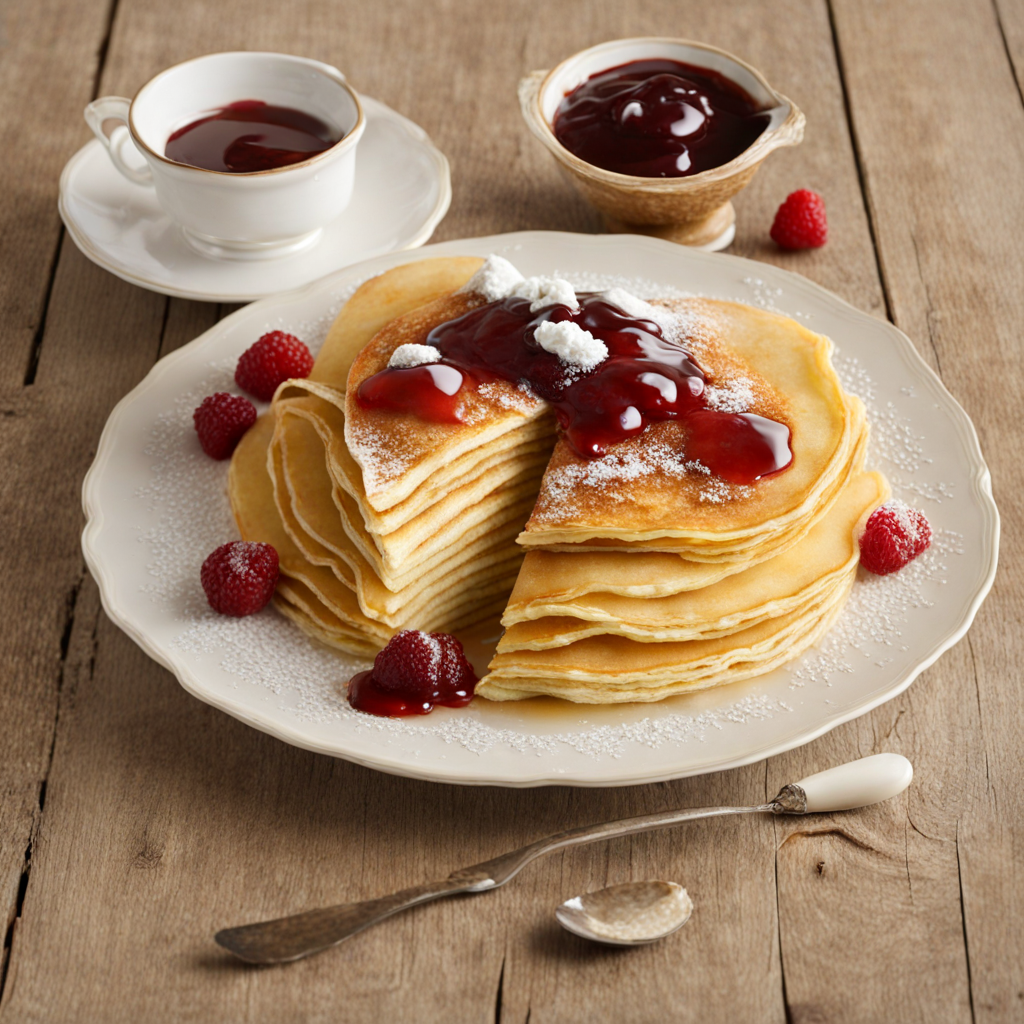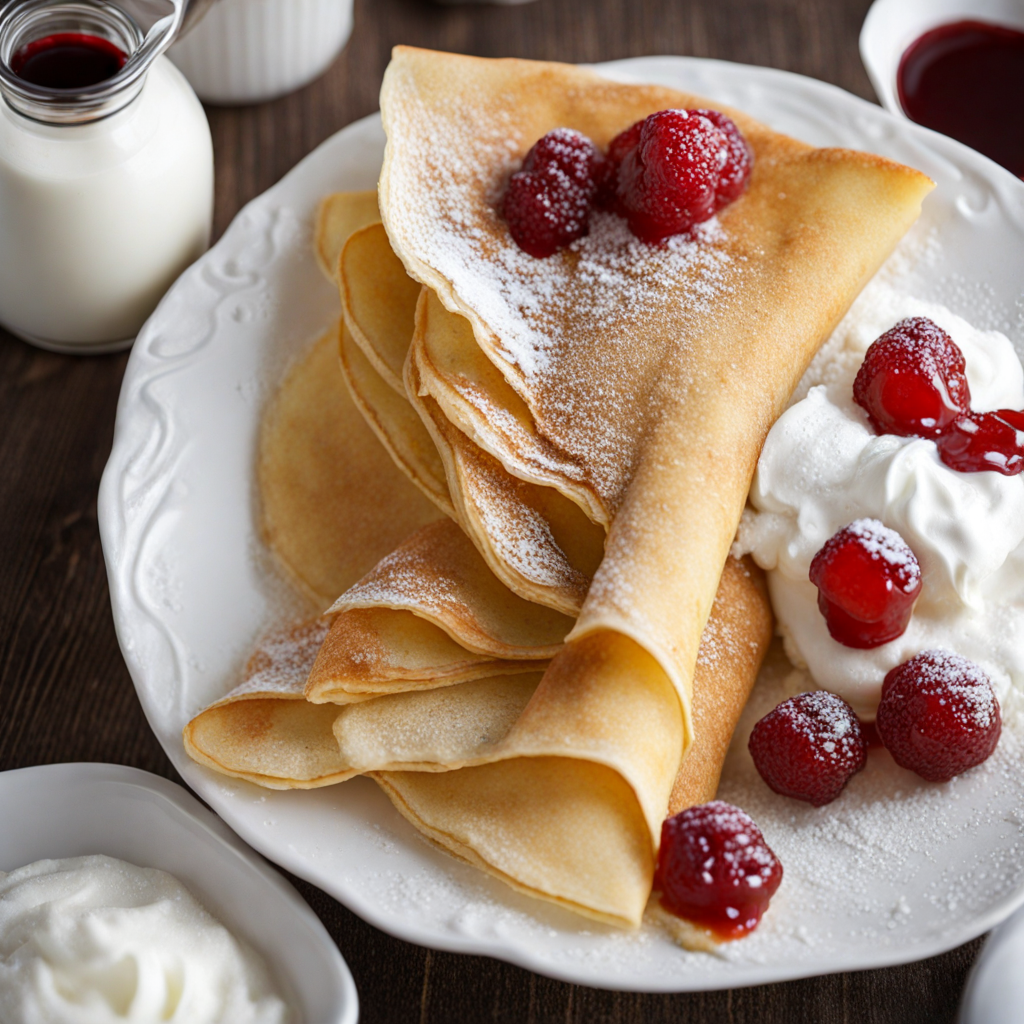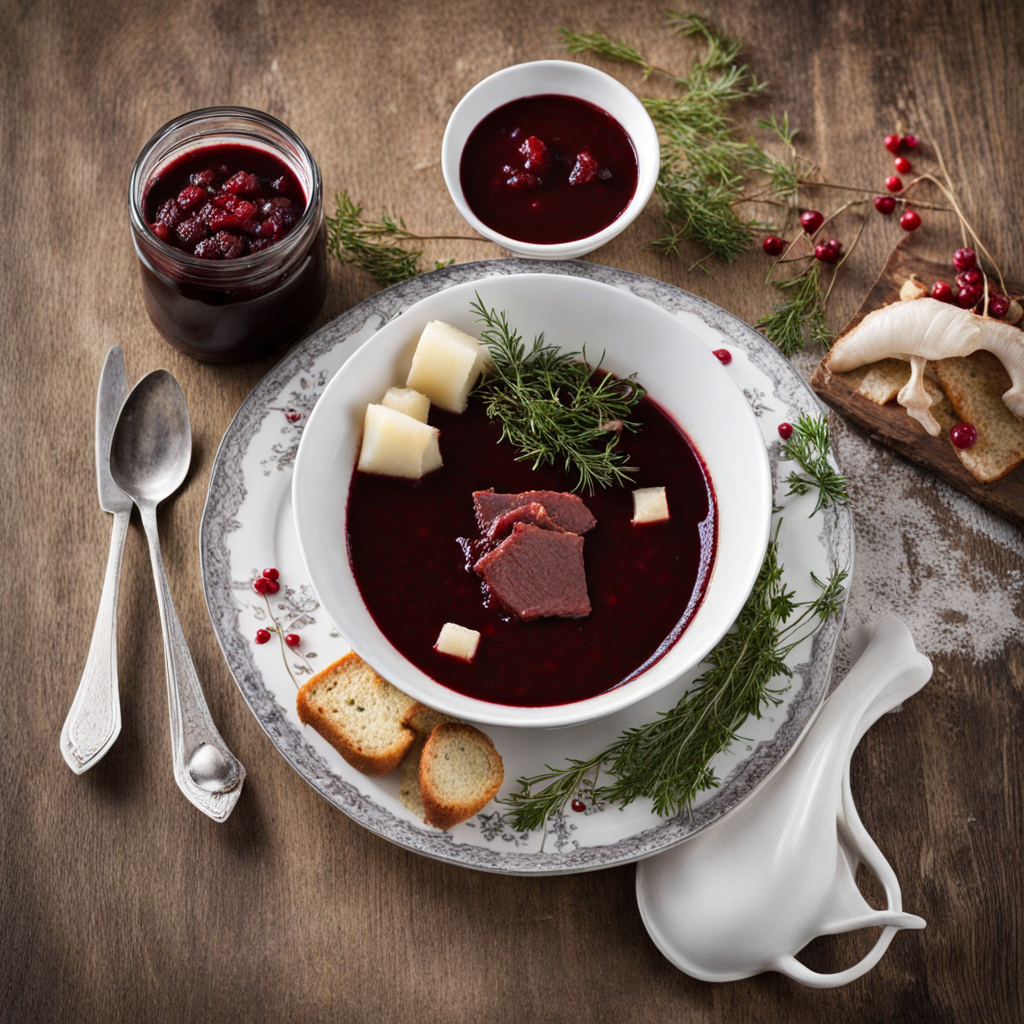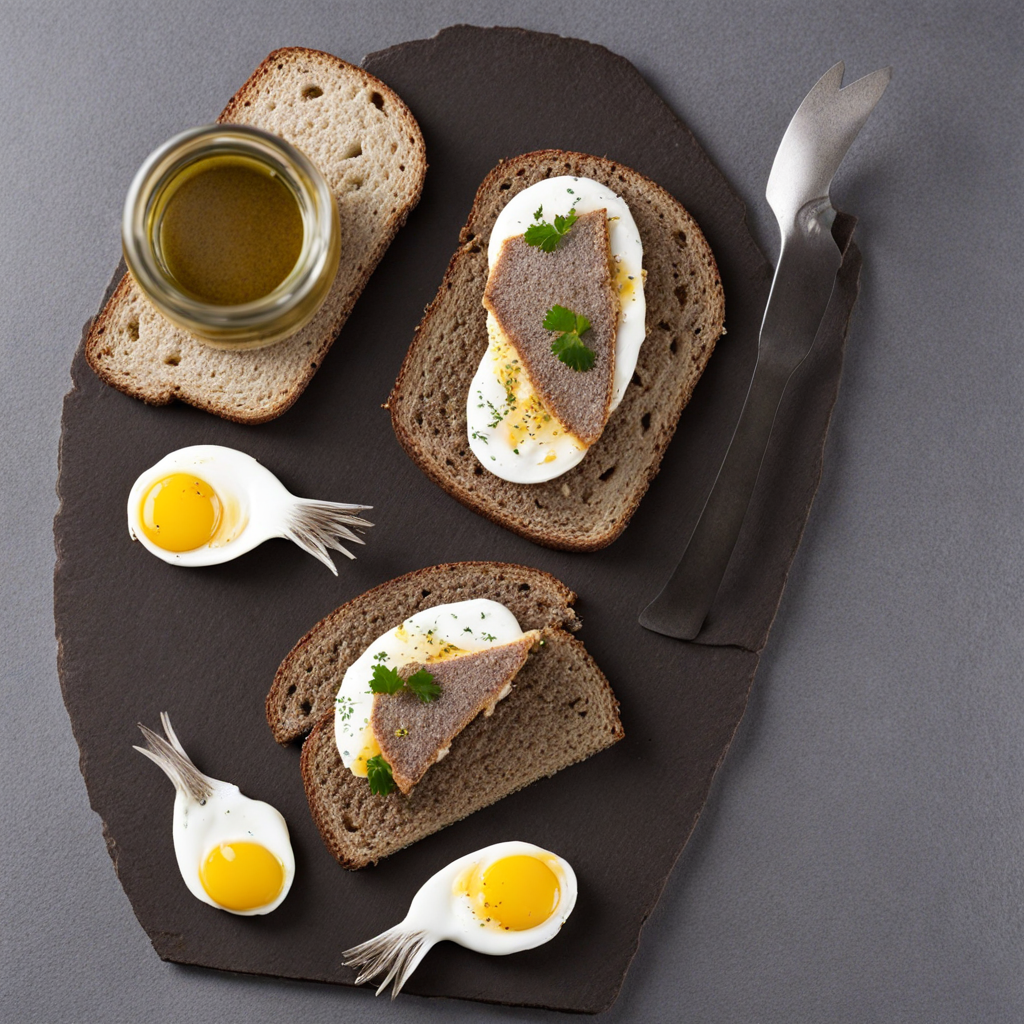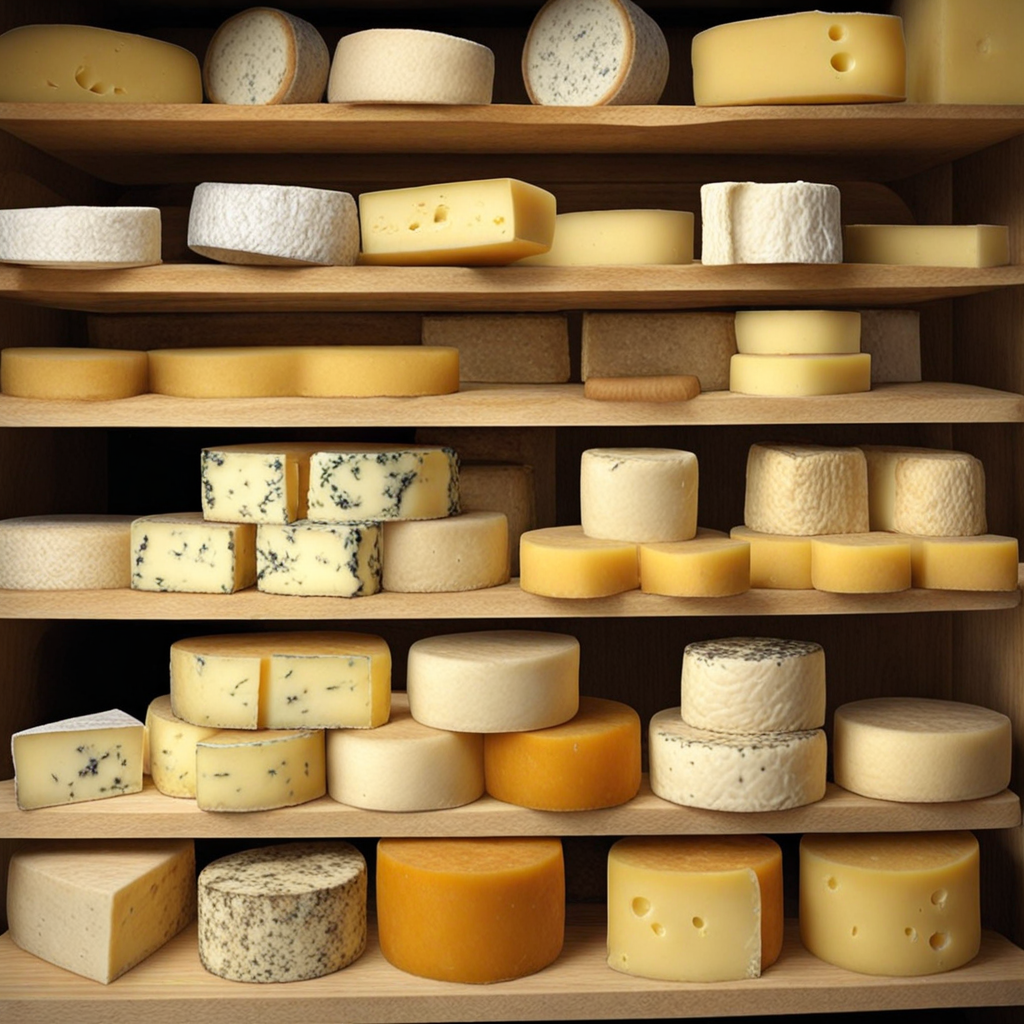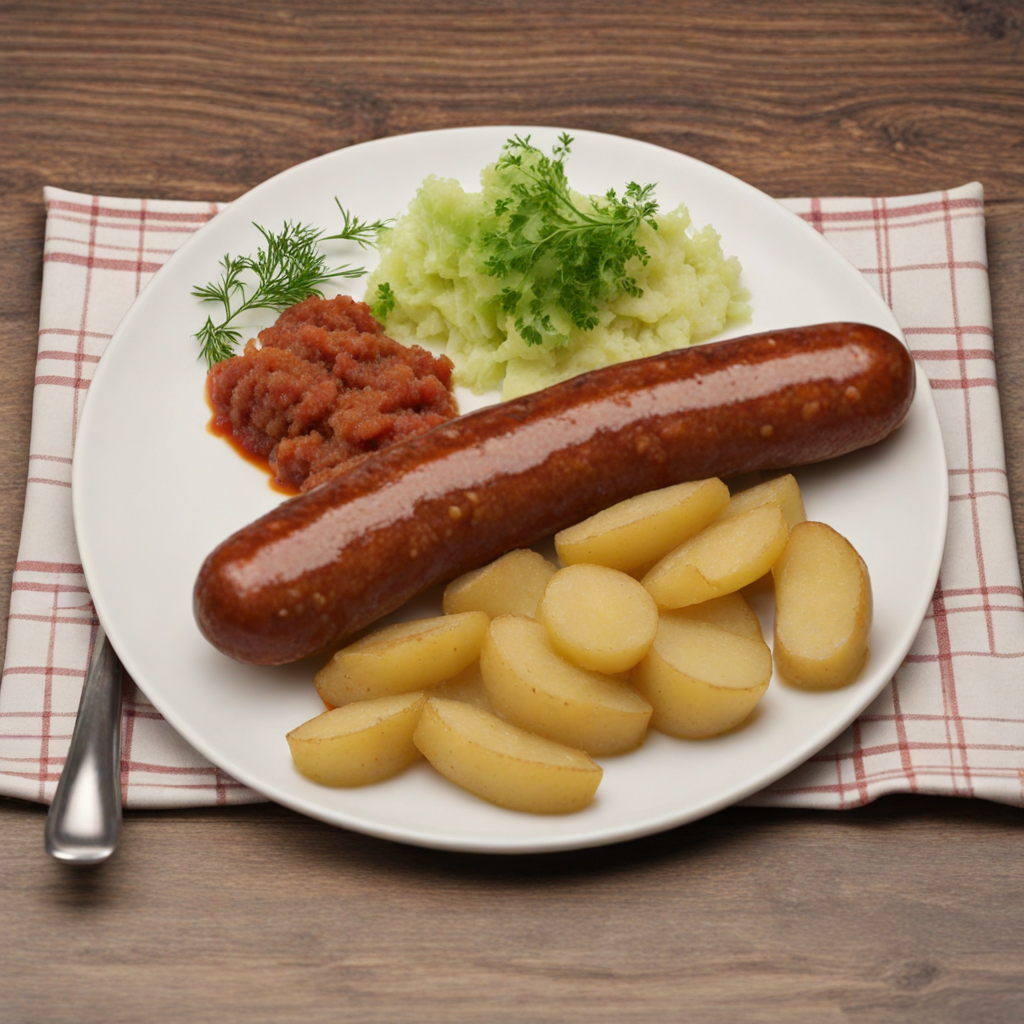Swedish Pancakes
Swedish pancakes, or "Svenska pannkakor," are a delightful twist on the traditional pancake, known for their thin, delicate texture and rich flavor. Unlike their fluffy American counterparts, these pancakes are more akin to crepes, made with a simple batter that typically includes flour, milk, eggs, and a pinch of salt. The result is a light and slightly chewy pancake that is perfect for both sweet and savory fillings. Their versatility makes them a popular choice for breakfast, brunch, or dessert in Swedish households. When served, Swedish pancakes are often rolled or folded and topped with a variety of delicious accompaniments. Common toppings include lingonberry jam, a tart yet sweet fruit preserve that adds a burst of flavor, and a dusting of powdered sugar for a touch of sweetness. Many also enjoy them with a dollop of whipped cream, fresh berries, or even a drizzle of maple syrup for a more indulgent experience. The combination of the soft pancake with the tartness of the lingonberries creates a harmonious balance that elevates each bite. The experience of eating Swedish pancakes is not just about flavor but also about tradition and comfort. They are often enjoyed during family gatherings or special occasions, fostering a sense of togetherness and celebration. Each bite transports you to the cozy kitchens of Sweden, where the aroma of freshly cooked pancakes fills the air. Whether you're savoring them at home or trying them at a local Swedish café, Swedish pancakes promise a unique and satisfying culinary adventure that is sure to delight your taste buds.
How It Became This Dish
The History of Svenska Pannkakor: Sweden’s Beloved Pancakes Svenska pannkakor, or Swedish pancakes, are a cherished culinary tradition that encapsulates the essence of Swedish culture and gastronomic history. These thin, delicate pancakes, often served with a variety of toppings, have roots that stretch back centuries, reflecting both the agricultural practices of Sweden and the nation’s evolving social customs. Their significance extends beyond mere sustenance; they are a symbol of hospitality, family gatherings, and festive occasions. #### Origins of Svenska Pannkakor The origins of pancakes, in general, can be traced to ancient civilizations, where variations of flatbreads were made from grains and water, cooked on hot stones or in pans. In Sweden, the earliest recorded recipe for pancakes dates back to the 16th century. During this time, pancakes were a practical solution for utilizing surplus flour and were often made with rye, barley, or oats—grains that were commonly grown in the region. With the introduction of wheat flour in Sweden during the late 19th century, pancakes began to evolve into the lighter, more refined dish we recognize today. The shift from hearty, rustic pancakes to the thinner, more delicate Svenska pannkakor was influenced by changes in culinary techniques and the availability of ingredients. By the 18th century, pancakes had begun to appear in Swedish cookbooks, signifying their growing popularity in households across the nation. #### Cultural Significance Svenska pannkakor hold a special place in Swedish culture and are often associated with family gatherings, celebrations, and social events. Traditionally served with a variety of toppings, including lingonberries, whipped cream, and jam, these pancakes are not just a meal but an experience that fosters togetherness. In Sweden, it is common to serve Svenska pannkakor during festive occasions, such as Midsummer celebrations, when families and friends come together to enjoy the long summer days. The act of making and eating pancakes is often accompanied by laughter, storytelling, and a sense of community. Children learn to make pancakes at an early age, which further solidifies the dish's role in family traditions. Moreover, Svenska pannkakor epitomize the simplicity and resourcefulness of Swedish cuisine. The ingredients are minimal—usually just flour, eggs, milk, and a pinch of salt—but the method of preparation requires skill and patience. Traditionally, pancakes are cooked in a large frying pan or a special pancake pan, and the art lies in achieving the perfect thinness and golden-brown color. This culinary practice is passed down through generations, reflecting a deep respect for heritage and the importance of home cooking. #### Development Over Time As Sweden entered the 20th century, the development of Svenska pannkakor continued to reflect broader societal changes. The industrialization of food production led to the commercialization of many traditional recipes. Pancake mixes became available in supermarkets, making it easier for families to prepare pancakes quickly without the need for extensive culinary knowledge. However, despite the convenience of pre-packaged mixes, many Swedes continue to cherish homemade versions, recognizing the unique flavor and texture that comes from traditional methods. The culinary landscape of Sweden also began to embrace international influences, especially post-World War II when globalization opened up new avenues for cultural exchange. This led to a fusion of flavors and new serving styles. While the classic Svenska pannkakor remained a staple, innovative chefs began to experiment with ingredients and toppings, incorporating elements from other cuisines. For instance, savory variations of pancakes filled with mushrooms, spinach, or cheese emerged, showcasing the versatility of this beloved dish. In contemporary Sweden, Svenska pannkakor have found their place on restaurant menus, often reimagined with gourmet flair. Chefs may serve them with exotic fillings or pair them with modern accompaniments like fresh fruit compotes, artisanal syrups, or even ice cream. However, the essence of the dish remains unchanged: a celebration of simplicity, flavor, and tradition. #### Svenska Pannkakor in Modern Times Today, Svenska pannkakor are enjoyed not only in homes across Sweden but also in Swedish restaurants and cafes worldwide. They have transcended their humble origins to become a beloved dish for both locals and visitors seeking an authentic taste of Swedish cuisine. The growing interest in Nordic gastronomy has further popularized Svenska pannkakor, leading to increased appreciation for traditional Swedish cooking methods and ingredients. Social media has also played a significant role in the revival and reinvention of Svenska pannkakor. Food bloggers and influencers share their own unique recipes and creative presentations, inspiring a new generation to explore and celebrate this classic dish. Online platforms have made it easier for people to connect over their love of cooking, sharing tips, and variations of Svenska pannkakor, which continues to keep the tradition alive. Moreover, the dish’s adaptability makes it suitable for various dietary preferences. Gluten-free and vegan versions of Svenska pannkakor have emerged, allowing more people to enjoy this culinary delight without compromising their dietary restrictions. This evolution reflects a broader trend in contemporary cuisine, where traditional recipes are reinterpreted to meet the needs of modern eaters. #### Conclusion Svenska pannkakor is more than just a dish; it is a cultural artifact that embodies the spirit of Sweden. Its history is a testament to the country’s agricultural roots, social customs, and culinary innovation. As families continue to gather around the table to enjoy these pancakes, they are not just sharing a meal but also passing down a cherished tradition that connects generations. Whether served during festive occasions or as a simple weekday breakfast, Svenska pannkakor remain a beloved symbol of Swedish hospitality, creativity, and the joy of sharing food with loved ones. With each thin, golden pancake, the story of Sweden’s rich culinary heritage continues to unfold.
You may like
Discover local flavors from Sweden


